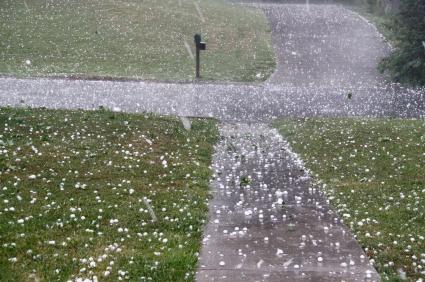 Hailstorms stypically strike in the Midwest and Great Plaines but can happen in any state in the nation. Hail and windstorm losses are one of the top losses for property damage.
Hailstorms stypically strike in the Midwest and Great Plaines but can happen in any state in the nation. Hail and windstorm losses are one of the top losses for property damage.
This year the Insurance Institute for Business & Home Safety Research Center conducted the first-ever indoor hailstorm, in an effort to research building products and ways to educate consumers.
Damage from both hail and wind caused more than $3.9 billion in property claims in 2012 for State Farm Insurance. According to the carrier, the states with the most wind/hail losses include:
Texas—47,000 claims
Illinois—41,000 claims
New York—34,000 claims
Ohio—31,000 claims
Missouri—25,000 claims
Tennessee—24,000 claims
Indiana—23,000 claims
New Jersey—23,000 claims
Kentucky—22,000 claims
Colorado—16,000 claims
For those facing a potential hail storm, there are steps they can take to reduce the risk of damage, such as pulling cars, boats, RVs, lawn and patio furniture into a covered area.
When building or remodeling, homeowners might consider impact resistant roofing to reduce hail damage. State Farm currently offers insurance premium discounts to homes with qualifying impact-resistant roofing products in 26 states and one Canadian province.
Those who do suffer damage from a hailstorm should work with their insurance agent or claims adjustor to fully understand the claims process and how covered repairs will be handled.
State Farm customers who have reported a loss can expect to be contacted by a claim representative who will review their policy, explain what’s covered, outline the claim process and answer questions.
When facing repairs, it’s important to choose a reputable roofing contractor by looking for one that’s a licensed or bonded and to request references.
Not all jurisdictions require licensing of roofing contractors. Ask to see certificates of insurance to be sure both liability and workers compensation insurance coverage is carried and are in force during the time the roofing work is being done.
Homeowners might also contact your local Better Business Bureau or the National Roofing Contractors Association for assistance in locating a professional contractor in a specific geographic area.
Homeowners should be weary of anyone who visits a home without an appointment and professes to represent the insurer. In this case, it’s important to ask for identification and contact the insurer to confirm anyone’s identity and affiliation before allowing access.












